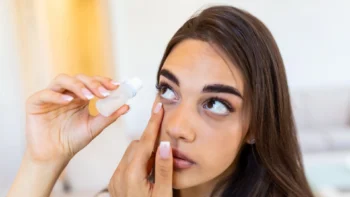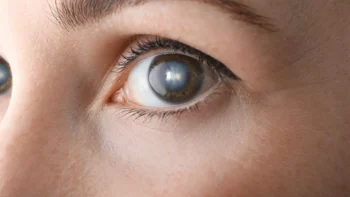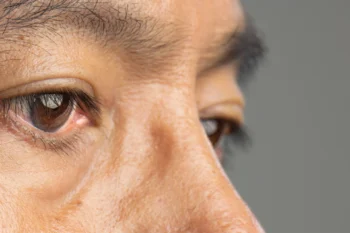Pinguecula vs. pterygium are two common eye conditions that affect the conjunctiva, or the membrane that covers the white part of your eyes and lines the inner eyelid. While these two conditions have similar causes and symptoms, how they differ can help you better understand your eye health, recognize their onset, and take the proper treatment action. Below, we’ll outline how these conditions are characterized, what their causes and symptoms are, and what remedies you can take to treat them.
How Is a Pinguecula vs. Pterygium Characterized?
The pinguecula is a yellowish, raised and sometimes thick growth that appears on the white of the eye, either as a single lump, or as a clump of multiple, smaller lumps. It is made up of fat, proteins, and calcium deposits that form on the conjunctiva, and is often found in the corner of the eye closest to the nose. While it may be unsightly, it is considered harmless, and shouldn’t cause any vision issues. You may experience some irritation or discomfort, though, depending on its location and size.
The pterygium is an elevated, triangle-shaped growth that has blood vessels, is
fleshier in appearance, and is pink/red. The pterygium vs. the pinguecula is a more serious condition, as it can cause quite a bit of discomfort, and it can grow over time to eventually cover part of the cornea, causing vision issues if left untreated.
Pterygium & Pinguecula Causes
Pinguecula and pterygium are both caused by prolonged exposure to the sun’s UV rays (especially as a child), dust particles and wind. People who live in drier climates or regions with high levels of air pollution are more likely to develop them. Individuals who spend a lot of time outdoors without the protection of sunglasses are also at an increased risk for both conditions.
What Symptoms Should You Look for With Pinguecula vs. Pterygium?
The symptoms for both of these conditions are similar, and may vary in their intensity from mild to severe. The most common symptoms that patients experience is dry, itchy, or a burning sensation in the eyes, similar to how it feels when you get sand stuck in your eye. Other symptoms include:
- The conjunctiva swelling or becoming red as the pterygium grows.
- A yellow spot/bump on the white of the eye that can be felt when you blink.
- Blurry or distorted vision.
- Obstructed vision.
What Remedies Are Available for Pinguecula vs. Pterygium?
Fortunately, pinguecula and pterygium can usually be treated with lifestyle modifications and ocular lubricants. A good first step is to start wearing sunglasses when outdoors and avoid direct exposure to the sun, dust, and wind as much as possible. Eye drops and artificial tears can also help keep the eye lubricated and reduce irritation. In more severe cases, surgery may be necessary to remove the growths.
Expert Solutions at Brimhall Eye in Las Vegas
In most cases of pinguecula vs. pterygium that we see, lubricating or steroid-based eye drops are the best way to manage the discomfort caused. For rare cases of severe pterygium, surgery may be recommended to remove it if it’s causing obstructed vision. If you’ve developed either pinguecula or pterygium, contact one of our experienced specialists here at Brimhall Eye in Las Vegas, at (702) 263-2020 or fill out our contact form on our website, and we’ll provide you with a comprehensive evaluation and personalized treatment plan.





